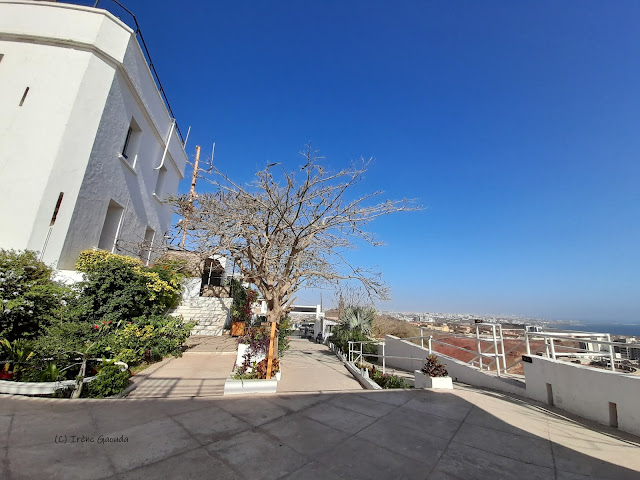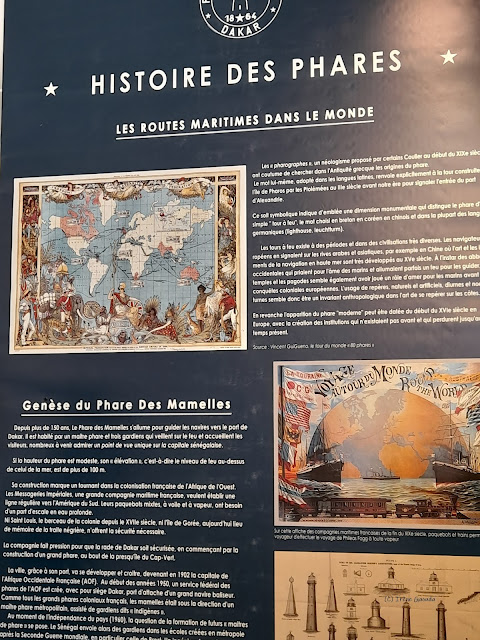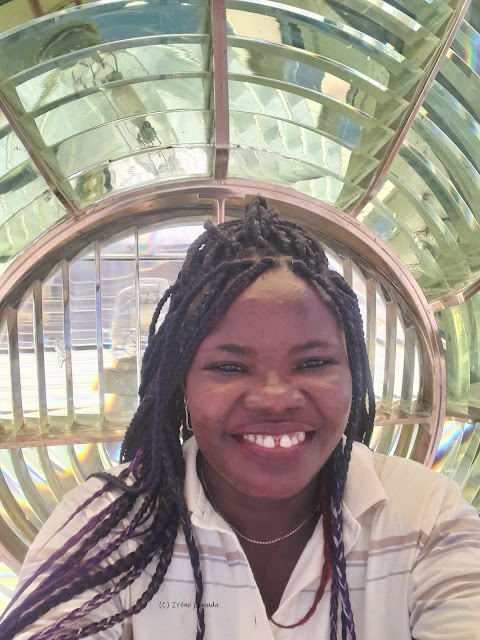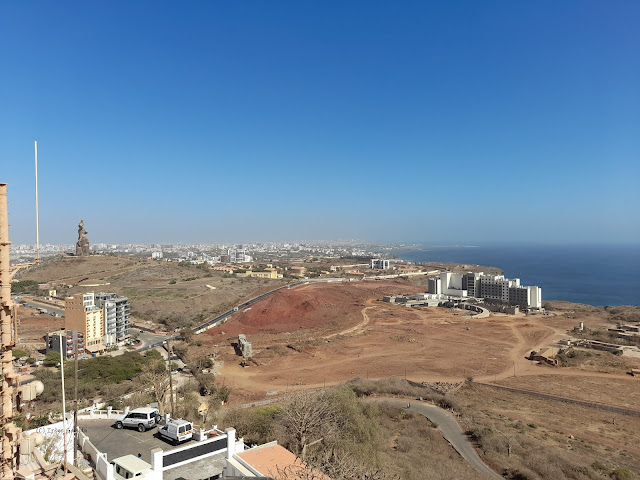That day, Irene & Monique went to the Mountain. It
wasn’t an ordinary Mountain. It was a prominent hill located at the banks of
the Atlantic Ocean. On that hill was built more than a hundred years ago, a white lighthouse
commonly called Phare des Mamelles...
Phare is the Lighthouse and Mamelles stands for a pair
of prominent hills in Ouakam, a suburban district of Dakar, 9 km northwest of
Senegal's capital on the Cabe verde peninsula.
You can access the Lighthouse
by car (transportation service available). You can also take a walk to the
hill.
For more than a hundred years, the Lighthouse has been lit to guide ships to the port of Dakar.
It is inhabited by a master lighthouse and three keepers who watch over the location and welcome inquisitive visitors of a unique point of view over the Senegalese capital.
If the height of the lighthouse is modest, its elevation, that is to say the level of fire above that of the sea, is more than 100m.
Its construction marks a turning point in the French construction of West Africa.
Completed in 1864, it has
been described as "one of the world's great lighthouses, guiding ships
around the western tip of Africa.
On the second floor is the watch room, which is used by the duty keepers during the night.
A spiral staircase climbs up to the lantern room, containing the Barbier, Bernand and Turenne second order Fresnel lens that floats in a bath of mercury.
It is illuminated by a 1000 watt halogen lamp operating on alternating current at 220 volts.
The light produces a white flash every five seconds at a focal height of 120 metres.
This is one of the world's great lighthouses, guiding ships around the western tip of Africa. Its light has a range listed at 57 km (almost 36 mi).
Views from the lantern gallery provide panoramic views of the entire peninsula, including Almadies, N’Gor, Ouakam, and the African Renaissance Monument which is located on the second the Deux Mamelles hills.
In addition to the lighthouse, you can also find shelter and restaurant services.
If you happen to fly to Senegal one day...


















Commentaires
Enregistrer un commentaire